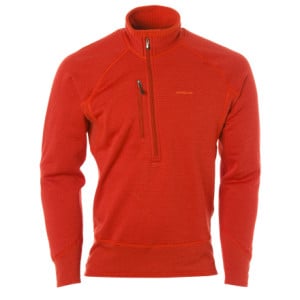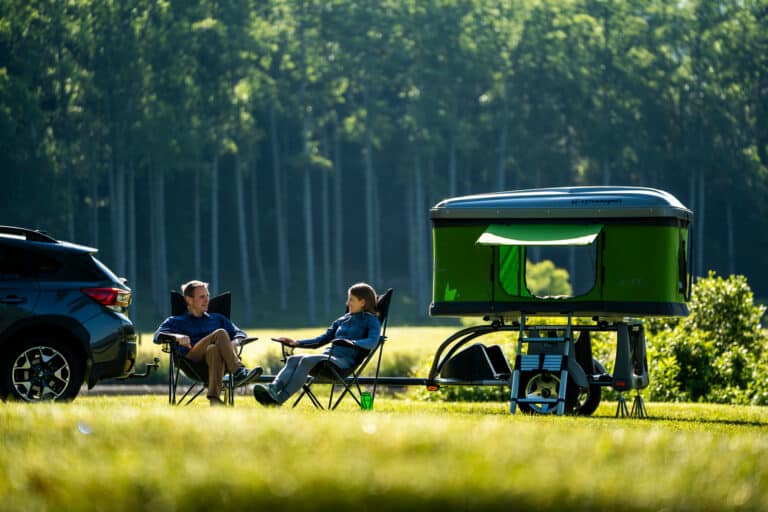We all know the big trouble with Capeline. Don’t pretend you don’t know what I mean. It stinks.
I recall an afternoon swim in a snow-fed river after a long hike. It felt so good to cool off and be clean again. I started to put on my Capeline zip-top that I’d worn the previous morning until temperatures warmed. As I did this, I stopped dead in my tracks. Whoa! Was there a dead animal in my shirt?! I mean to tell you, that top smelled like a half-dead homeless man in August. I know I’ve never smelled that bad, so why did my shirt? I did what anyone would do, and plunged my shirt into the river. I rubbed, scrubbed, and dunked, but when the shirt came out, the stench remained—only slightly diffused by cold water and wishful thinking.
In the past, I’d worn Capeline as a mid-layer, usually with a cotton or 50/50 shirt underneath it for extra warmth and comfort. This worked very well to keep me warm and comfortable all day as long as I wasn’t getting really sweaty. But with space at a premium and no laundry opportunity in sight for two weeks, I bagged the natural fibers for lighter weight synthetic ones that would insulate even if a rain torm blew over. I knew I could wash them at camp in the evening if I had the opportunity, and they’d be dry by the time we packed up camp in the morning.
The value in these polyester fabrics is that with minimal weight and bulk, they offer good insulation even when wet. The core of the fabric does not absorb water and allows the fabric to “wick,” keeping you warm, dry, and lightweight even when you sweat buckets. The other upside of the wicking is that when you do sweat buckets and then get cooler, you won’t be cold and wet from your own sweat.
So back to the river … Suddenly I was faced with a crisis about which I’d only heard rumors. What was I going to do for the next two weeks? If I left the stuff behind, not only would I be cold, but Capeline wasn’t exactly cheap either.
Today, there are many more alternatives.
While Patagonia has done a lot to improve the smell that arises from Capeline when it comes into contact with body heat and sweat, the result is still far from good. Other companies like Marmot have added silver to their fabric to help fend off the stench. This has helped some. But how long the silver will remain in the fabric after multiple washings is a big question.
Wool offers durability and insulation even when wet. The downside is its weight and bulk. While it doesn’t smell worse than you ever will, it is fluffier and takes up more space in a pack or suitcase. When wet, wool will continue to insulate; however, it doesn’t possess any wicking properties. High performance wool also tends to be a bit pricey. IceBreaker makes a great product—fashionable and technical.
Silk is another great alternative. It’s lightweight, incredibly soft and comfortable on the skin, and insulates when wet. It will even wick, but not as well as it’s polyester counterpart. The major downside? Cost.
Duofold makes some wool and cotton blend items. They are not highly technical, but they keep you warm, and wear very well after years of washing. Prices are very reasonable.
Morgan Mills made good old-fashioned long underwear, but rather than using 100% cotton, they used a 50/50 cotton-poly blend. The result was comfort, wicking, and a very low cost. I purchased three of their tops on sale for under $15. Unfortunately as far as I can tell, this company no longer exists.
After berating Patagonia, I will tell you about their newer line called the R1, which is polyester with a touch of Lycra; however, it doesn’t seem to smell like its Capeline cousin. I’ve worn it against my skin, and no one has mistaken me for a dead animal. The addition of spandex allows the fabric to move with you, which makes it less constricting than Capeline too. Unfortunately, it does pack far more bulk and feels more like a tight outer layer.
The great compromise: featherweight silk underneath merino wool. Pricey yes, but you won’t need many of these. The natural fibers will provide lasting comfort and durability, and can be worn multiple times before you or your friends start to wonder when you last showered.










